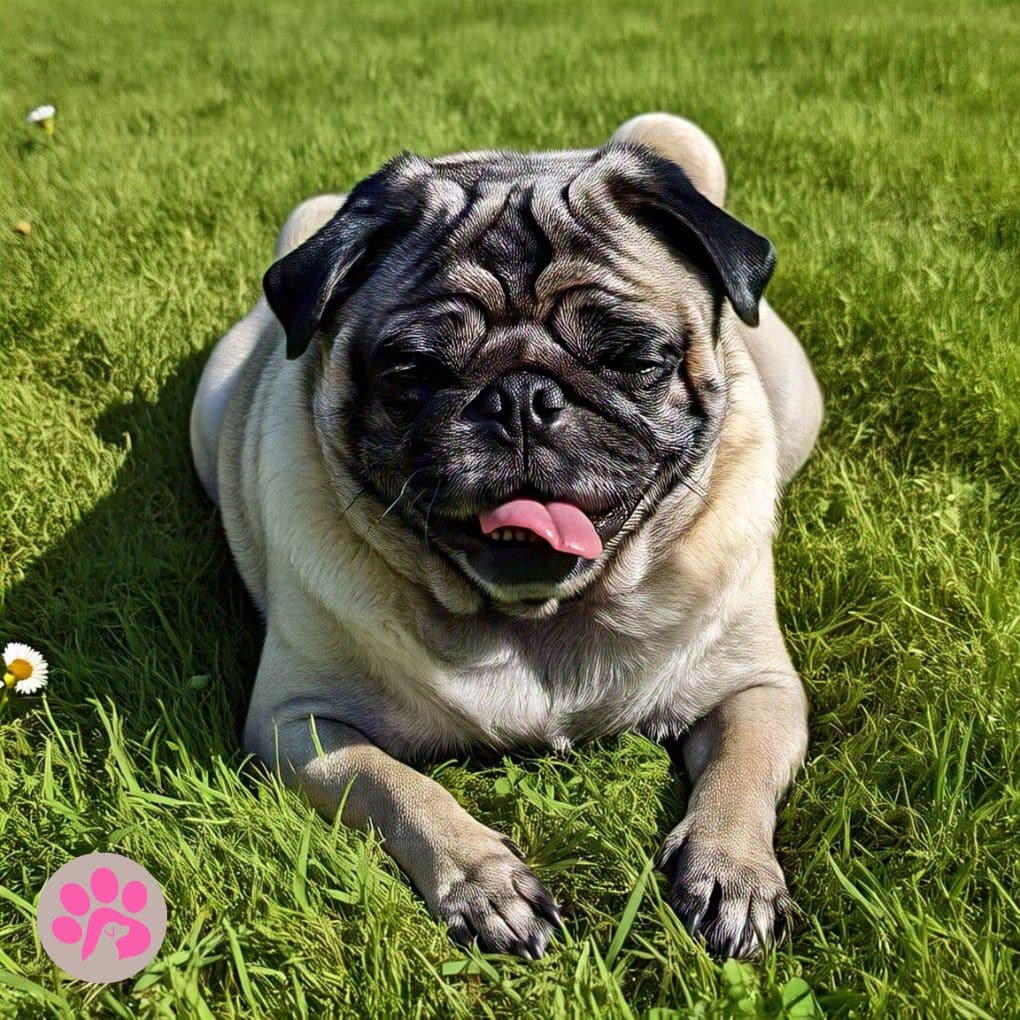Pugs are adorable, loving, and full of personality, but keeping them healthy requires more than just cuddles and playtime. A balanced, nutritious diet is one of the most important aspects of caring for your pug. Their small size, unique facial structure, and tendency to gain weight make their dietary needs a bit special. So, what are the best diet tips for a healthy pug? Let’s dive into some fun, fact-filled, and easy-to-follow advice!
Understanding Your Pug’s Unique Dietary Needs
Before jumping into specific diet tips, it’s important to understand what makes pugs different from other dog breeds. Here are a few key factors that influence their dietary requirements:
Brachycephalic Face:
Pugs have flat faces, which can cause breathing difficulties. This impacts how they eat and how active they can be.
Small Size, Big Appetite:
Pugs typically weigh between 14 and 18 pounds but have enormous appetites. They’re prone to overeating and gaining weight easily.

Sensitive Stomachs:
Pigs can have food allergies or sensitivities, so a proper diet is crucial.
Prone to Obesity:
Due to their love for food and slower metabolism, pugs can easily become overweight if not monitored closely.
1. Choose the Right Dog Food
The foundation of your pug’s diet starts with high-quality dog food. Not all dog foods are created equal, and pugs need a balanced diet that meets their specific nutritional needs.
What to Look For:
Protein First:
Look for dog food that lists real meat (like chicken, turkey, or fish) as the first ingredient.
Healthy Fats:
Omega-3 and Omega-6 fatty acids promote a healthy coat and support joint health.
Limited Fillers:
Avoid dog foods loaded with fillers like corn, wheat, and soy, which can cause allergies.
Essential Vitamins and Minerals:
Ensure the food includes vitamins like E, C, and B complex for immune health.

Dry vs. Wet Food:
- Dry Kibble: Great for dental health and easier to store.
- Wet Food: More palatable and hydrating but can be calorie-dense.
Pro Tip: Mix dry and wet food occasionally to provide variety and keep your Pug excited about mealtime!
2. Control Portions to Prevent Obesity
Pugs are masters of the “puppy dog eyes,” making it hard to resist giving them extra treats. However, maintaining portion control is critical to prevent obesity, a common issue in the breed.
How Much to Feed:
- Puppies: 3-4 small meals per day to support growth.
- Adults: 2 meals per day, typically ½ to 1 cup of high-quality dog food daily, split between meals.
- Seniors: Adjust food portions based on their activity level and health needs.
Watch for Weight Gain:
- Use a measuring cup for accuracy.
- Stick to a consistent feeding schedule.
- Regularly check your Pug’s waistline if you can’t feel their ribs easily, they might be gaining weight.
3. Keep Treats Healthy (and Limited!)
Everyone loves giving their dog a treat, but treats should be occasional and healthy. Overindulgence can lead to unwanted weight gain and other health problems.
Healthy Treat Ideas:
- Fruits: apple slices (no seeds), blueberries, and watermelon (seedless).
- Vegetables: baby carrots, cucumber slices, and green beans.
- Special Dog Treats: Look for low-calorie treats with natural ingredients.
Avoid: grapes, raisins, onions, garlic, and anything high in sugar or salt.

Pro Tip: Use small pieces of treats for training sessions to avoid overfeeding.
4. Keep Your Pug Hydrated
Hydration is just as important as food. Pugs can be prone to overheating due to their short snouts, so drinking enough water is crucial.
- Fresh Water: Always have fresh, clean water available.
- Hydrating Foods: Add water-rich veggies like cucumbers or small amounts of watermelon.
- Wet Food Bonus: Incorporate wet dog food occasionally to increase water intake.
Watch Out For: Signs of dehydration like dry gums, lethargy, and sunken eyes.
5. Be Mindful of Food Allergies and Sensitivities
Pugs are known for having sensitive stomachs, and food allergies can cause issues like itchy skin, ear infections, and gastrointestinal problems.
Common Allergens:
- Grains: wheat, corn, and soy.
- Proteins: Some pugs may be allergic to chicken or beef.
- Dairy: Many dogs are lactose intolerant.
What to Do:
- Look for “limited-ingredient” dog food.
- Introduce new foods slowly to monitor reactions.
- Consult your vet if you notice any signs of allergies, such as excessive scratching or frequent ear infections.
6. Establish a Regular Feeding Routine
Pugs thrive on routine, so keeping a consistent feeding schedule helps with digestion and prevents overeating.
Tips for a Great Feeding Routine:
- Feed at the Same Time Every Day: This helps regulate their metabolism and prevents begging.
- Create a calm environment: Feed them in a quiet space with minimal distractions.
- Don’t free-feed: Leaving food out all day encourages overeating.
7. Supplement When Necessary
In some cases, your pug may benefit from supplements, especially if they have specific health conditions.

Recommended Supplements:
- Fish Oil: For a shiny coat and joint health.
- Probiotics: For healthy digestion.
- Glucosamine & Chondroitin: To support joint health, especially in senior pugs.
- Multivitamins: Ensure overall nutritional balance.
Always consult your vet before introducing new supplements.
A Happy, Healthy Pug Starts With the Right Diet!
Feeding your pug the right way involves more than just filling their bowl. A balanced diet tailored to their unique needs can extend their life, improve their quality of life, and keep those charming wrinkles looking their best! Remember, pugs may be small, but their nutritional needs are mighty. By following these diet tips, you’ll be well on your way to ensuring your beloved Pug stays happy, healthy, and ready for more cuddles and adventures!